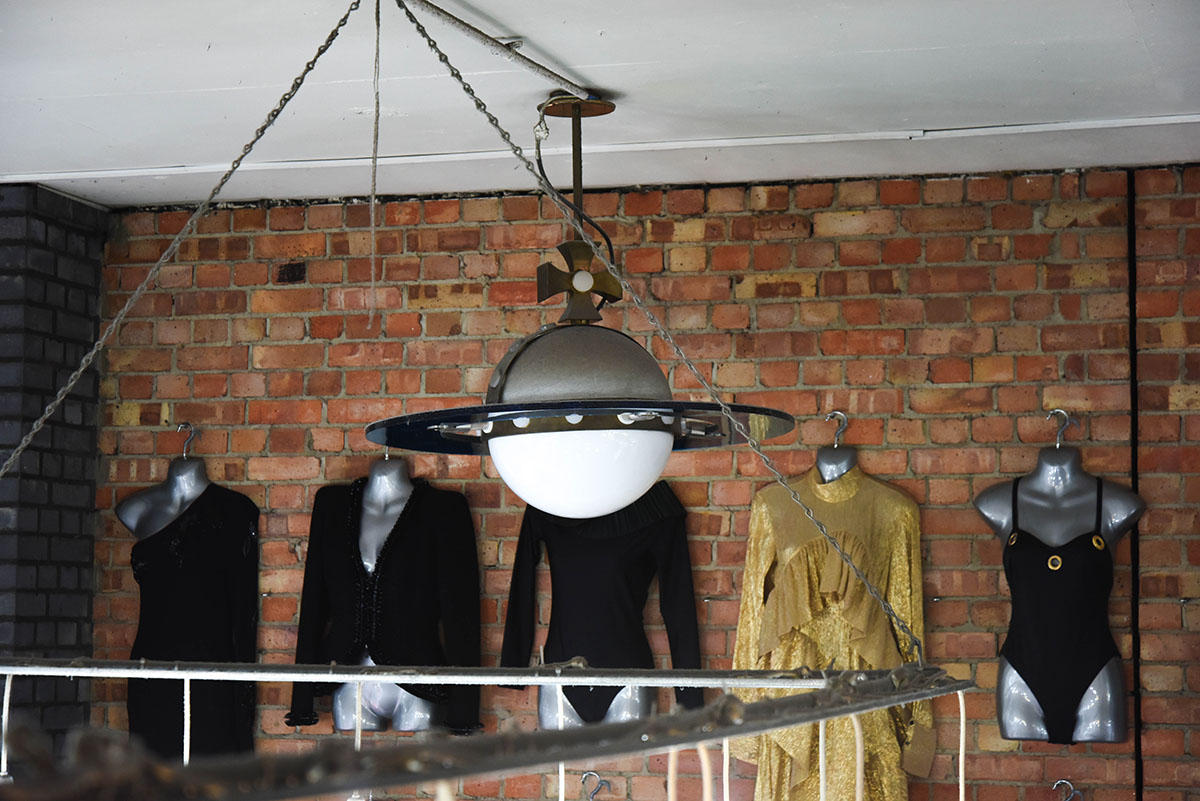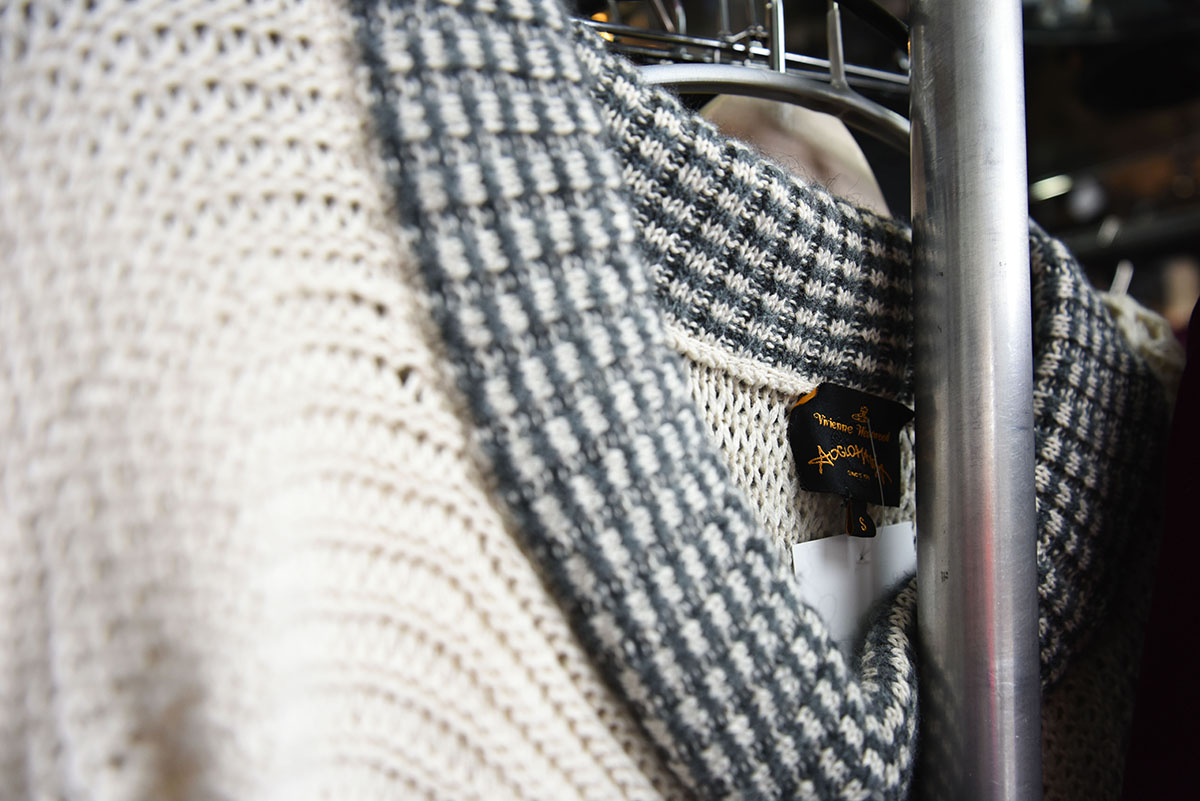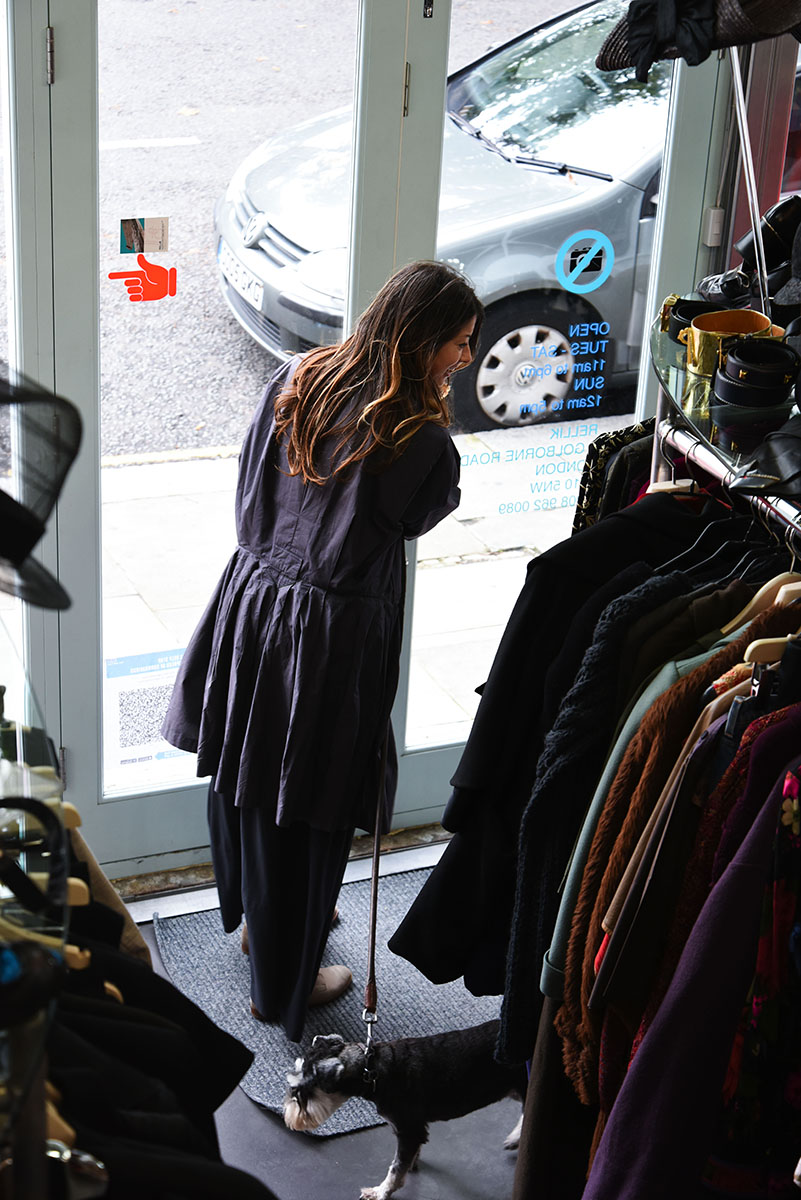INTERVIEW WITH FIONA STUART / RELLIK
Every year, the value and enthusiasm of designer vintage is increasing with a countless number of vintage specialty shops scattered all around the world. But before year 2000, how many of those shops actually existed? In December 1999, there was a destined encounter in West London's Portobello Market by Fiona Stuart, Claire Stansfield, Steven Philip, who became friends and opened a small boutique called 'Rellik'.
Nowadays, East London has communities of up-and-coming designers or artists with their own studio, but back in the days Notting Hill was the so-called hip area. Art students would discuss design at coffee shops and musicians would mingle over a few drinks. It's unimaginable from the tourist destination it has become today, but that's exactly how it used to be. Even as a creative sanctuary, the market for designer vintage was still a niche market back then. Everyone was into sweatshirts, tracksuits, sneakers, and deadstock sportswear. It was when secondhand clothes were much more popular. Before setting up the boutique, many said harsh things like, "That type of business is not possible." or "How crazy! Selling old clothes that would be displayed at a museum."
Twenty years later, Rellik has grown into one of the most prominent vintage boutiques in London. The boutique has been loved by a wide range - the regular customers from day one, stylists and celebrities.
The boutique carries masterpieces from the 60's to the present. From Japanese designer's such as Comme des Garçons, Issey Miyake, Yohji Yamamoto, to legendary brands that are exhibited at museums today such as Alaïa, Ossie Clark, Courrèges, Bill Gibb, Thea Porter, along with several pieces from currently famous brands such as Yves Saint Laurent, Vivienne Westwood, Thierry Mugler, Helmut Lang, Jean Paul Gaultier, Ann Demeulemeester, Balenciaga, Celine, Martin Margiela.
Claire and Steven announced the end to their long-lasting marriage as a team of three, this year. Claire takes a temporary leave to pursue a career in art, while Steven starts an appointment only archive store with a consultant in Brighton. Each follows their separate paths, as Fiona remains at Rellik. What is her perspective, as someone who spent her entire life with vintage even before the masses became interested.
Please tell us what got you interested in fashion?
I've been into fashion since I was a child. I used to live in Camberwell, Australia, which didn't have any stores that sold clothes I liked. So, I'd buy fabric, create my own patterns, and make my own clothes. That lasted for a while and when I turned 15, my father's transfer brought me to London. I consider England's golden years of clothes to be the 70's and music to be the 80's. It wasn't a particular artist or musician; it was the whole movement and club culture that I loved. Since then because I lived close to Portobello Market, I often went to the market.
Did you study fashion and design?
In 1988, after completing the Foundation course at Central Saint Martins (hereinafter called CSM), I studied interior design at Kingston University London. I studied at CSM a little bit after (John) Galliano was enrolled, but CSM in the 80's was also amazing. I can still remember the first day of class. We were suddenly brought outside, picked up objects on the ground and were assigned to use it to create artwork. In addition, the lectures were always at a pub (LOL). The teachers were always drinking beer. Unlike today, tuition was covered by the government. We were really fortunate to be given the opportunity to genuinely learn about fashion and art without worrying about money.



Did you start Rellik right after you graduated?
After I graduated, I was working as an interior designer for a while but hardly got any work. At that time, when I was walking around in my neighborhood, I was asked "Do you want to work together?" and started helping at a stall in the market. A few months later, I had my own stall. In the beginning, I was selling samples used by designers and first collections. Samples actually take a lot of time and effort. At times, samples have more rarity making the clothes more interesting. I also had items created by fashion and art students for their graduate shows. But the people of Portobello preferred secondhand clothes, so business didn't go well, and I stopped that in a week (LOL). From the next day, I started selling clothes from my own wardrobe which took off and lasted about 5 years. There were several Japanese customers who bought a lot of Ossie Clark, BIBA and items from the 70's. After that, since the market is cold in the winters and difficult to go to the restrooms, I felt the necessity to set up a base somewhere. I first asked Claire in the next stall, and figured we'd need at least one more person so asked Steven. The property was originally a convenience store but the rent wasn't expensive and it was a good space, so the decision was made immediately. That was the start to Rellik.
Tell us about the fashion and cultural situation of London, especially West London, during those days.
There was just a lot of overflowing energy. West London had the same atmosphere as today's Hackney - a vibrant, fun, cool area with lots of youngsters. There was a culture that existed there. After the release of the movie Notting Hill, the rent skyrocketed and development progressed, so the people started to move to Kensal Rise. I think it was from those days that this area lost its characteristic.
Compared to other vintage boutiques, what is different about Rellik?
There is a solid history and value, along with having items that is fashionable today. It can be described as a "modern vintage boutique". Furthermore, we're really close to Rellik customers as many have been coming to us for a long time. They would casually stop by, try stuff on, buy it and after a while they would come back saying, "that piece I bought was amazing!" That's always so exciting.


Please share with us your favorite vintage boutique, aside from your own.
I don't go to other shops in London but when I travel overseas, I end up visiting vintage shops. Clothes and culture are connected so depending on the country, shops can be quite different. I think the thoughts and views of vintage is different. If I were to name one in particular, Le Swing in Barcelona was good. Of course, there are many wonderful shops in Paris and New York too.
With the changing times, is there a change in the customer base?
When you run a boutique for a long time, the children of your customers and the younger generations starts to come. It's a fun sight to watch. People my age go out less and our body size changes, so they come to sell clothes. On the other hand, vintage seems fresh for the teens and 20's. They try on anything with the obvious desire of wanting to dress differently than others. The clothes from the 90's is especially popular.




The passion in last year's vintage seemed to be more about the trendy aspects rather than nostalgic. As a vintage boutique expert, how do see this.
I feel that the value for vintage now is too high and a lot of people who sell their clothes are expecting an expensive purchase. At the end of the day, the price of vintage clothes is up to the buyer. Clothes is not a piece of art. Of course, clothes have value but it's not an artwork by Damien Hirst. It's so silly to buy sneakers for a few thousand pounds, only to display it and not to wear it. In the past, I bought a Steiff created by Karl Lagerfeld, but I realized it was silly just to have it on display, so eventually sold it. It's not only that the vintage value is soaring but at the same time some people are looking for that nostalgic feeling. There are people who love old Yves Saint Laurent items and there are some who miss Paco Rabanne. There is great charm in original items with history. Even if it's the same brand, there's a different attraction when the designer changes.
When a new designer is appointed, the brand changes?
It's hard to understand why a brand must continue with a new designer when a designer leaves or passes away. With this situation, new designers won't be found, and everyone just ends up being a designer for some brand. Brands shouldn't appoint a designer but should rather sponsor a designer. In the past, there was a store in Kensington called Hyper Hyper which supported young designers. We need more stores or spaces like that. Browns used to buy student graduate collections and display it in their window, and Dover Street Market supported young talent. It's a famous story that Isabella Blow bought Alexander McQueen's collection.


Are there any designers that you've always loved?
Martin Margiela is definitely one of my favorite designers. He was able to successfully express himself through fashion. Mcqueen, also. Both did not simply design an object for the body to wear but created something that is alive. It is exceedingly rare that a designer designed outside the framework of clothes or a collection. Yves Saint Laurent's designs are all timeless and beautiful pieces as well.
If Japanese designers have a certain characteristic, what do you think that would be?
The shape. Not only is it carefully tailored but it's comfortable and the fit is beautiful. The material is top class and carefully selected too. Many designers change their style and theme every season to gain exposure, but the Japanese designers seem to be persistent. Designers like Rei Kawakubo and Yohji Yamamoto - both have consistency from the very beginning of their brand. Not only that, but they also experimentally explore something new every season. I also love the 70's ISSEY MIYAKE and KENZO. You can strongly sense the adventurous spirit for design. Japanese designer vintage items are often bought by designers from all over the world for inspiration.








While a huge social shift is required due to issues like COVID-19 and the environment, what kind of role should fashion take on hereafter?
I believe fashion always has the power to raise someone's excitement. It's also extremely personal cause it basically covers your body. Safety, warmth, and a tool to express yourself. From now on, rather than considering fashion as a consumable, it should be thought of as something that can bring people happiness. The entire world is going through a huge shift, with a stagnant mood. We can't dress up to go out and we don't even know when those days will return. Meanwhile, Isabel Marant's Spring Summer 2021 collection was amazing! It was a party and disco theme, with the models dancing around having fun. It was a show that made you want to wear those clothes when the world is back to normal. I think we'll seek fun and happy clothes from now on.
Under these circumstances, what is the thing you enjoy most?
I used to love to travel to exotic places so it's tough when you have to live in a "small world" with restrictions. The last place I visited was Jamaica. Now, I'm either gardening, walking my dog, cooking, doing yoga or swimming. I have a daughter in high school, so basically go back and forth between work and home. Cecily Brown's exhibition at Oxford's Blenheim Palace was great. There was only 4 other people besides myself, but maybe that's how it should be. When I was there, I noticed how much I missed art and realized the last time I went was back in February - to the Andy Warhol exhibition at the Tate Modern.
Your boutique displays a Warhol print…is he one of your favorite artists?
Actually, not so much (LOL). I originally liked painters like Lucian Freud and Francis Bacon. You can look at their paintings for hours and never get bored. The paintings painted by Gogh when he lived in London is beautiful too. We're really lucky cause London has so many exhibitions by him… although you need reservations for everything now.

Can you tell us about your current wardrobe?
I used to wear dresses from the70's or clothes that I customized but my tastes changed with age. Now I wear Rick Owens, Haider Ackermann, Preen, Yves Saint Laurent and mix it with ZARA items that I bought from a charity shop.
Lastly, what are your future plans for Rellik.
Even since lockdown, we added an ecommerce function on our website. We might also start menswear - although it's difficult to find men's items that gets you excited and the number of men that shop at a vintage boutique is much lower than women. But above all, I hope to see customers from all over the world, as soon as possible.





Text_ Takaaki Miyake
